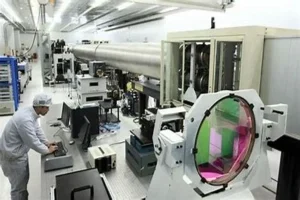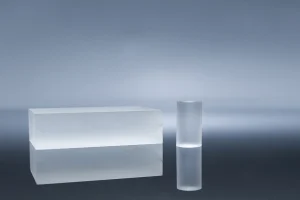Introduction
Laser technology has dramatically evolved in the past few decades, particularly in the realm of industrial cutting and machining. A critical component in any laser system is the laser crystal, which forms the heart of the system. This article focuses on a comparative evaluation of three widely used laser crystals, namely Yb:YAG, Yb:KGW, and Yb:KYW.
Understanding Laser Crystals
Laser crystals are crucial components within a laser system. They are responsible for the amplification of light, leading to the creation of a focused, high-energy beam. Among the myriad of choices available today, Yb-doped crystals stand out due to their excellent thermal properties, efficient energy conversion, and outstanding beam quality.
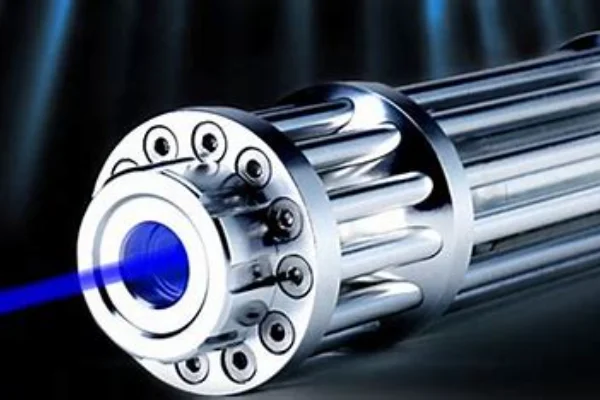
Ytterbium-doped Laser Crystals
Ytterbium (Yb) is a commonly used dopant in laser crystals, particularly in high-power industrial applications. It has several favorable properties, including a wide absorption and emission spectrum, a high quantum efficiency, and a low threshold power. We will be comparing three popular types of Yb-doped crystals: Yb:YAG, Yb:KGW, and Yb:KYW.
Yb:YAG Laser Crystals
Yb:YAG (Ytterbium-doped Yttrium Aluminum Garnet) laser crystals have secured a prominent place in high-power and high-efficiency laser applications. They are exceptional due to their unique combination of properties that place them at the forefront of laser technology. Renowned for their cutting abilities, Yb:YAG lasers primarily owe their prowess to their high peak power and excellent beam quality. This combination makes them ideally suited for intricate and precise cutting operations, significantly raising the standards in industries where cutting hard and reflective materials is essential.
The high peak power of Yb:YAG lasers, often unmatched by other laser systems, is a crucial feature that facilitates their cutting capabilities. This high peak power means that Yb:YAG lasers can quickly and efficiently cut through even the most robust and hard materials. The range of materials that can be machined using these lasers is quite broad, making them an invaluable asset in numerous industries.
Alongside their power, the quality of the beam emitted by Yb:YAG lasers plays a vital role in their effectiveness. Beam quality, in laser technology, is a measure of the light beam’s coherency and directionality. Yb:YAG lasers, in this regard, outshine most of their counterparts. They provide a consistently high-performing beam with high repeatability and low divergence, all of which are crucial aspects for high-quality machining.
The low beam divergence implies that the beam stays focused over longer distances, which allows for high-quality machining even at large working distances. This capability is incredibly valuable in large-scale industrial setups where the working distances are significant. Consequently, Yb:YAG lasers have found immense applicability in industries ranging from heavy machinery to delicate medical devices.
The performance of Yb:YAG lasers isn’t only dependent on their power and beam quality but also on their thermal properties. Laser operations generate a significant amount of heat, which can impact the overall performance and even cause damage if not properly managed. Yb:YAG lasers exhibit outstanding thermal efficiency, which stems from their lower quantum defect compared to other Yb-doped lasers. This property leads to less heat generation during laser operation, minimizing thermal effects and promoting the longevity of the system.
In addition, the lower quantum defect of Yb:YAG lasers results in less wasted energy, enhancing the overall performance and making them more energy-efficient. This is a significant factor in today’s environmentally conscious world, as industries seek to minimize their energy usage and reduce their carbon footprint.
In conclusion, the superior cutting abilities, excellent beam quality, and thermally efficient properties of Yb:YAG lasers make them a superior choice in high-power and high-efficiency laser applications. They set a high bar in terms of performance and efficiency in a diverse array of applications, from large-scale industrial cutting to precision manufacturing. With their potential still being explored, it is clear that Yb:YAG lasers will continue to play a pivotal role in shaping the future of laser technology.
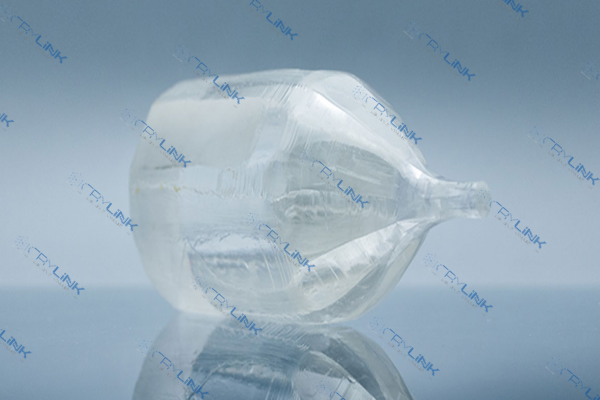
Yb:KGW Laser Crystals
Distinguished by high absorption and emission cross-sections, Yb:KGW (Ytterbium-doped Potassium Gadolinium Tungstate) laser crystals excel in short pulse and ultrafast applications. These crystals have revolutionized many fields, leveraging their unique features to achieve precise, efficient, and high-quality results.
When it comes to cutting capabilities, Yb:KGW lasers are particularly advantageous in applications that necessitate short pulses and high peak powers. Given these requirements, industries are turning towards Yb:KGW lasers for tasks where precision is of utmost importance. These lasers excel in delicate operations such as micromachining, where material is removed from a workpiece with extremely high precision. This feature makes Yb:KGW lasers suitable for industries where minute details are crucial, such as electronics and precision engineering. Furthermore, Yb:KGW lasers are also excellent for thin film removal, a process used extensively in the production of electronic and optical devices.
The beam quality of Yb:KGW lasers is another attribute that sets them apart. Beam quality has a direct impact on the accuracy and precision of laser applications, and with their superior beam pointing stability and low phase noise, Yb:KGW lasers excel in tasks requiring high spatial resolution. The impressive beam pointing stability ensures that the laser beam maintains its direction even under external influences, which is essential in applications that demand precision and consistency. On the other hand, the low phase noise characteristic of Yb:KGW lasers contributes to a more stable and coherent beam, crucial for achieving fine details in laser applications.
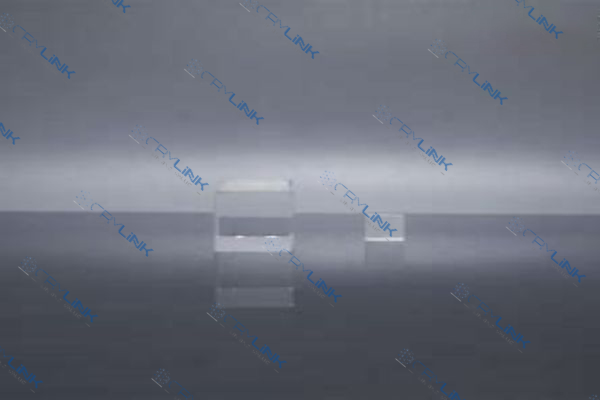
Thermal effects can significantly affect the efficiency and lifespan of laser systems. Yb:KGW lasers have a larger quantum defect compared to Yb:YAG lasers, which could lead to more heat generation during operation. However, this potential disadvantage is effectively counterbalanced by the strong thermal conductivity of KGW. This attribute helps to dissipate the generated heat rapidly, ensuring that the laser operates at a stable temperature. It also allows Yb:KGW lasers to maintain stable performance even under high pump power, which is often required in demanding industrial applications.
In conclusion, Yb:KGW laser crystals, with their exceptional cutting capabilities, high beam quality, and effective thermal management, offer significant advantages in short pulse and ultrafast applications. Their versatility and performance make them an invaluable resource in various industries, ranging from electronics to precision engineering. As technology continues to advance, the applications and potential of Yb:KGW lasers are expected to expand even further, driving innovation and progress in laser technology.
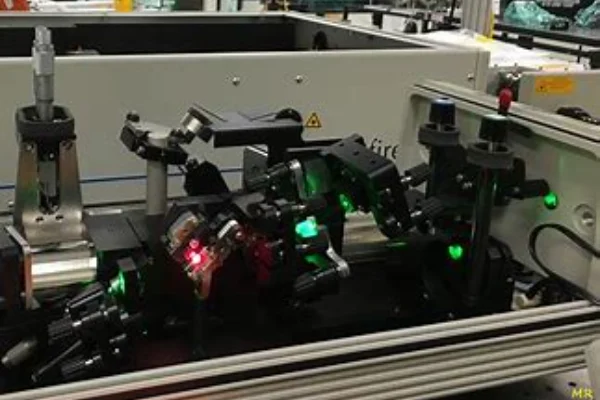
Yb:KYW Laser Crystals
Standing at the forefront of laser technology, Yb:KYW (Ytterbium-doped Potassium Yttrium Tungstate) lasers bring to the table a unique blend of high absorption cross-section and a wide emission bandwidth. This combination extends their utility across a broad spectrum of applications, pushing the boundaries of precision and speed.
The cutting capabilities of Yb:KYW lasers serve as a testament to their versatility and efficiency. Thanks to their wide emission bandwidth, they are highly suitable for high-precision ultrafast applications. Fields such as non-linear microscopy, optical frequency combs, and precision micromachining greatly benefit from these lasers. Non-linear microscopy, a technique pivotal in biological research and medicine, relies heavily on the short pulses provided by Yb:KYW lasers. Likewise, the generation of optical frequency combs, which are essential tools in spectroscopy and precision measurement, also leverage the unique capabilities of Yb:KYW lasers.
The beam quality of Yb:KYW lasers is another notable feature. Delivering a beam with significant peak power and high quality, they are an ideal choice for applications necessitating excellent spatial resolution and high stability. The remarkable peak power allows for precise manipulation of the beam, making it a valuable tool in precision-oriented applications. Its ability to maintain beam quality even in the face of perturbations, on the other hand, assures the reliability of results, making it an asset in industries where precision cannot be compromised.
While dealing with thermal effects, Yb:KYW lasers also shine bright. Even though the quantum defect of Yb:KYW is higher than that of Yb:YAG, leading to more heat generation during operation, the inherent thermal properties of KYW crystals provide an excellent heat sink. This feature enables rapid heat dissipation, ensuring the stability of performance across a wide range of operating conditions. The efficient heat management of Yb:KYW lasers also contributes to their durability, making them a long-lasting solution in various industrial settings.
In conclusion, the versatility and precision of Yb:KYW lasers, combined with their outstanding beam quality and efficient thermal management, make them a leading choice in high-precision ultrafast applications. Whether it’s contributing to advancements in biological research or enabling precision in manufacturing, Yb:KYW lasers continue to break new grounds in laser technology. As we continue exploring their potential, Yb:KYW lasers are set to play an even more crucial role in the future of laser applications.
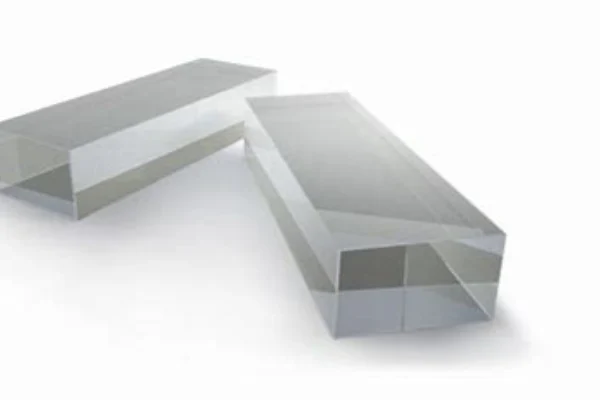
Applications in Industrial Cutting and Machining
Laser crystals, particularly those doped with ytterbium, have found widespread use in industrial cutting and machining due to their superior power, efficiency, and beam quality.
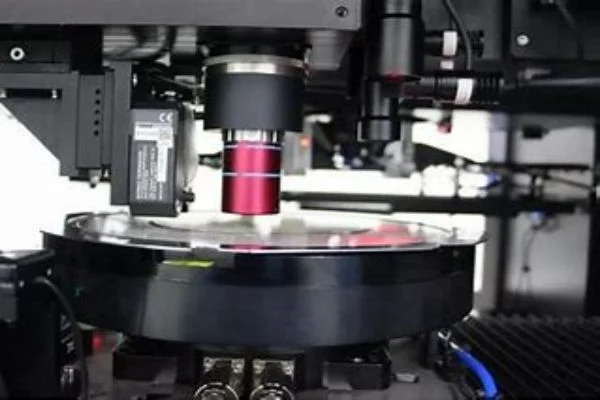
Yb:YAG in Industrial Cutting and Machining
Yb:YAG lasers are often employed in high-power industrial applications such as metal cutting, welding, and drilling. Their high peak power and excellent beam quality make them ideal for precision cutting of hard materials such as steel and titanium.
Additionally, due to their excellent thermal properties, Yb:YAG lasers are often used in demanding industrial applications where high-speed, high-quality cutting is required.
Yb:KGW in Industrial Cutting and Machining
Yb:KGW lasers excel in applications requiring short pulse lengths and high peak powers. They are ideal for precision micromachining tasks, where material is removed with high precision and minimal thermal effects.
Furthermore, Yb:KGW lasers are used in delicate operations such as thin-film removal, semiconductor processing, and micro-hole drilling in various industries, including electronics, automotive, and aerospace.
Yb:KYW in Industrial Cutting and Machining
Yb:KYW lasers, with their high absorption cross-section and wide emission bandwidth, are perfect for ultrafast applications. They are commonly employed in precision micromachining, where a high degree of accuracy is required.
Additionally, they are used in applications such as nonlinear microscopy, optical frequency combs, and supercontinuum generation, which rely on their high spatial resolution and stability.
Conclusion
Choosing the right laser crystal for cutting operations is a critical task that depends on the specific application requirements. While Yb:YAG offers excellent beam quality and thermal efficiency, Yb:KGW and Yb:KYW excel in applications requiring short pulse lengths and high peak powers. Understanding the advantages and limitations of each crystal type is key to selecting the most suitable solution for your cutting needs.
FAQs
- 1. What is a Yb-doped laser crystal?
- A Yb-doped laser crystal is a type of laser crystal where Ytterbium (Yb) ions are added to the crystal structure to enhance its optical properties.
- 2. Why are Yb:YAG lasers popular in high-power applications?
- Yb:YAG lasers are popular in high-power applications due to their superior beam quality, high peak power, and excellent thermal efficiency.
- 3. What makes Yb:KGW lasers suitable for short pulse applications?
- Yb:KGW lasers have high absorption and emission cross-sections, making them ideal for applications requiring short pulse lengths and high peak powers.
- 4. How do Yb:KYW lasers provide high spatial resolution?
- Yb:KYW lasers offer a high beam quality and significant peak power, which are beneficial for applications that require excellent spatial resolution and stability.
- 5. Can Yb-doped laser crystals be used for applications other than cutting and machining?
- Yes, Yb-doped laser crystals have a wide range of applications beyond cutting and machining. They can be used in telecommunications, medical procedures, research, and defense, among others.



